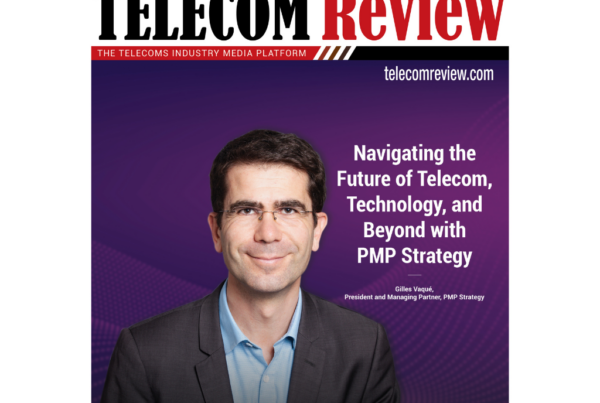A 100-fold increase in the number of teleconsultations: this is one of the impacts of the Covid-19 health crisis. While this practice was developing very slowly – nearly 10,000 acts per week – and at the signing of addendum n ° 6 in September 2018 governing teleconsultation and tele-expertise, the CNAM provided for 500,000 teleconsultations for the year 2019 then 1 million for the year 2020 [it reimburses more than 190 million general medicine consultations each year], these volumes were reached for the week of March 23 to 29 for the first objective, then for the last week of April for the second… Yes, annual volume objectives have been reached over a week!The number of physicians using it thus fell from less than 3,000 before mid-March to 45,000 at the end of April (for a total of nearly 120,000 private practitioners). The use of the teleconsultation service included in the contracts of complementary organizations has also exploded, + 400% on average but with a very low initial volume.On the other hand, we do not have any data on the evolution of the number of tele-expertise acts, almost nil before confinement (less than 800 acts for the whole of 2019).
Thus, what 4 plans dedicated to telemedicine since 2000, the recurrence of annual flu epidemics (which in some years is more fatal than Covid-19) or rider no.6 have failed to do, a virus did it…
Telemedicine is a form of remote medical practice based on the use of information and communication technologies. It covers five categories of acts:
- Teleconsultation: it allows a doctor to consult a patient remotely; the patient can be assisted by a healthcare professional
- Tele-expertise: it allows a doctor to seek the advice of one or more expert doctors, without the presence of the patient
- Remote monitoring: it allows a healthcare professional to remotely interpret the data needed to monitor a patient
- Remote assistance: it allows a doctor to assist another doctor during the performance of a medical act
- Medical regulation: the medical response provided within the framework of medical regulation during calls made to the SAMU or centers 15.
Today, only teleconsultation and tele-expertise are subject to payment rules and an opposable tariff. The conditions for supporting remote monitoring and remote assistance remain to be defined; remote monitoring is still the subject of pricing experiments (ETAPES).
Massive and sustainable adoption of telemedicine?
For lack of masks, gowns and other protective equipment, city doctors have massively closed their practices (nearly 70% of specialist doctors) and / or resorted to teleconsultation since during confinement 25% of consultations were carried out remotely according to the Health Insurance.
Such an explosion in the number of teleconsultations is also explained by the adoption of transitional measures (valid until the end of the health crisis) and derogating from the rules defined by addendum # 6 of the medical convention: no obligation to consult their attending physician by telephone or to have physically consulted the physician at least once in the previous 12 months and the possibility of using insecure tools (WhatsApp, FaceTime, Skype, Teams, Zoom, etc.) or even the telephone only. While 81% of teleconsultations carried out were carried out by doctors as doctors treating their patients, no data is yet available to determine the weight of recourse to unsecured solutions.
Although it remains unclear whether to maintain these derogatory measures, several surveys of doctors show that at least 70% of them now wish to integrate teleconsultation into their daily practice.
Indeed, this unprecedented period allowed a majority (57% according to a survey by Doctolib) of doctors to discover that they could bill for acts they previously performed free of charge by telephone; this should however reinforce the Health Insurance on the transitory nature of the exemptions… This period also allowed the doctors (45%) to discover the comfort of teleworking; not to mention that for 36% of them this new mode of organization will allow them to increase the frequency of contact with their patients.
A major shift to be confirmed
While teleconsultation is often presented as a major solution to facilitate access to healthcare, its explosion during the Covid 19 crisis shows, however, that areas of medical under-density would not have adopted it as a priority, with a few departments concentrating the majority teleconsultations (44% of procedures in Ile-de-France alone). Also, more than a third of the patients who used it were under 30 years old, against 12% over 70 years old, while the latter use the health system much more than the former.
It also shows that specialist doctors used it less than general practitioners (35% versus 65%). Also, its explosion did not contain the renunciation of the care of chronic patients observed during the period of confinement.
Reading the forums of medical journals also shows that for doctors who discovered teleconsultation during the health crisis, in addition to the possibility that it offers them to see their patients more often, the interest in an upstream sorting of the reasons for consultation would progress strongly: many are in fact thinking of using teleconsultation in order to decide whether or not they should see a patient physically. It is the idea of prior “sorting” that is interesting here, the Swiss having shown us for a long time that this can be done by nurses.
Finally, this health crisis has also greatly accelerated the emergence of telemonitoring and telemonitoring:
- Since March, pharmacists and 7 paramedical professions (occupational therapists, nurses, masseur-physiotherapist, speech therapist, orthoptist, pedicurist-podiatrist and psychomotor therapist), ie 825,000 professionals, can now practice their profession remotely. If the procedures are common to all these professions (video transmission only, prior realization of at least one face-to-face treatment), the use cases are specific to each profession. Have all these health professionals benefited from attractive commercial offers from operators, such as doctors for teleconsultation?
- While telemonitoring is still the subject of experiments for the moment and has still not been generalized, its use has developed very strongly to promote home monitoring of patients with Covid 19. For example, the AP- HP has deployed the Covidom application, co-created with Nouvéal; as of May 20, this application had been used by 60,000 patients (or 42% of confirmed cases), 22,000 doctors and 320 establishments. Other solutions of the same type were also developed very quickly, such as those of the Montpellier University Hospital with MHComm, the Rennes University Hospital with Exolis or the Saint Etienne University Hospital with Lifen.
A major upheaval in the game of actors and many obstacles still to be lifted
Complementary organizations too should quickly learn from this unprecedented experience. Put an end to the unlimited number of teleconsultations reimbursed on the 1st euro for those who still practiced it. But above all, they could be led to review this service: if the massive adoption of teleconsultation by general practitioners is confirmed, they could organize their activity differently and respond to “urgent” requests from their patients, which would greatly reduce the market for medical services. closed teleconsultation platforms by limiting it to almost 5.4 million French people without attending physicians.
As for start-ups, they are ultimately not alone in the teleconsultation market since more than 140 players operate there; these operators can be classified into 4 groups: start-ups, professional software publishers, regional structures for inter-hospital cooperation, and even doctors. This market constitutes a real rat race for the moment: while the Health Insurance has counted 45,000 doctors practicing teleconsultation, 10 players would already equip more than 90,000 doctors of which only one (Doctolib) would equip nearly 40% of them. …
Even if “the bellows” has fallen today to a level which is however higher than before Covid 19, this very rapid emergence of telemedicine has nevertheless taken place in a very dispersed and very self-centered order by the various health professionals. The structuring of this market remains entirely to be done. However, the obstacles remain very numerous: despite the launch of the “Ségur de la santé”, the regulatory suspension remains intact (what will the CNAM and the unions do with the temporary relaxation of the rules?), The question of the interoperability of systems , however well-known, is progressing slowly while that of the fragmentation of tools (teleconsultation, tele-expertise and telesurveillance) has still not emerged. Without taking into account the central point, that of the general organization of the healthcare offer, i.e strengthening the coordination of actors and developing the delegation of tasks that telemedicine should greatly facilitate. Will the “Ségur de la Santé” help accelerate the reform of the capitation pricing model for healthcare professionals or will we have to wait for a new Covid epidemic?
Olivier Milcamps, Manager of the Financial Institutions division
Publication L’Argus de l’assurance:





